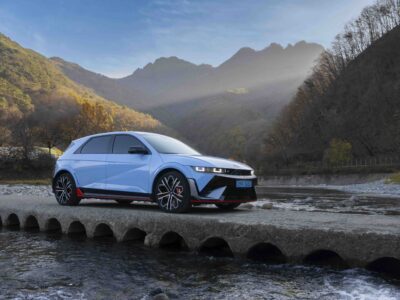Automobile manufacturing company General Motors has announced it will reach its goal of 100% renewable energy use across all 122 of its U.S. facilities by 2025 – five years before a previously announced date.
The shifted timeline positions General Motors to be one of the first car manufacturers in the U.S. to meet an entirely renewable energy goal.
GM’s major U.S. direct competitor, Ford Motor Company (the parent company of Ford), will meet a similar aspiration by 2035 – now a decade behind GM.
GM’s 2025 date is the second acceleration of the renewable goal that the company has seen in 2021. Earlier this year, General Motors announced that the company was advancing its current target date of 2050 (initially set in 2016) to 2030.
General Motors is the parent company of popular U.S. car brands, including Chevrolet, GMC, Buick, Cadillac, and others, as well as the popular in-car safety service, OnStar.
Although much of the gargantuan manufacturer’s past has been rooted in traditional, fuel-powered, mass-market vehicles across America, GM has publicly supported an all-electric future for the automotive industry, both in facility operations and across vehicle offerings. Further, it supports inclusive accessibility to electric vehicles, which it sees as essential to reducing carbon emissions.

“This is the sort of urgent action that is needed to halve global carbon emissions by 2030 and tackle the climate crisis,” said Sam Kimmins, Head of RE100 at Climate Group, an organization bringing together corporations embarking on sustainable initiatives.
General Motors’ ability to move the date up repeatedly stems from an aggressively revised four-pronged plan as well as new corporate partnerships. The pillars of the new strategy include increasing operational energy efficiency in facilities; renewable energy sourcing; planning for “intermittency” in the availability of renewables and installing methods for storing already-purchased renewable energy to be used at a later date; and policy advocacy for power microgrids that lend themselves to decarbonized power methods.

GM has also announced a new partnership with PJM Interconnection, a Pennsylvania-based Regional Transmission Organization (RTO), and TimberRock, a “technology-enabled energy company;” both of the third-party organizations will help GM evaluate, track, and minimize its carbon footprint.
In a release to its investors, GM wrote that the partnerships and “carbon tracking initiative enables GM to make strategic decisions about its energy consumption based on the carbon output of the grid at a given time… [so] GM can make informed decisions about tapping into stored renewable energy or reduce the amount of power being consumed.”
This initiative is designed to create a process for switching from primary power sources at GM’s facilities – when the latter are deemed too fossil-heavy – to auxiliary or secondary power reserves that are renewably sourced.
General Motors has strong global operations as well, and it has set a 2040 goal for carbon neutrality across those segments. Unofficially, GM has set a goal for tailpipe emissions-free vehicles by 2035, a hope that is furthered by the company’s $35 million investment in R&D for autonomous and electric vehicles, $27 billion of which is pledged by 2025 to support the offering of 30 electric vehicles in total.
In a statement to investors, Chief Sustainability Officer Kristen Siemen said climate action remains a priority of GM’s, which has led them to move more aggressively to “achieve 100 percent renewable energy five years earlier in the U.S. –” a step forward in the company’s [continued] advance on our commitment to lead an all-electric, carbon-neutral future.”





